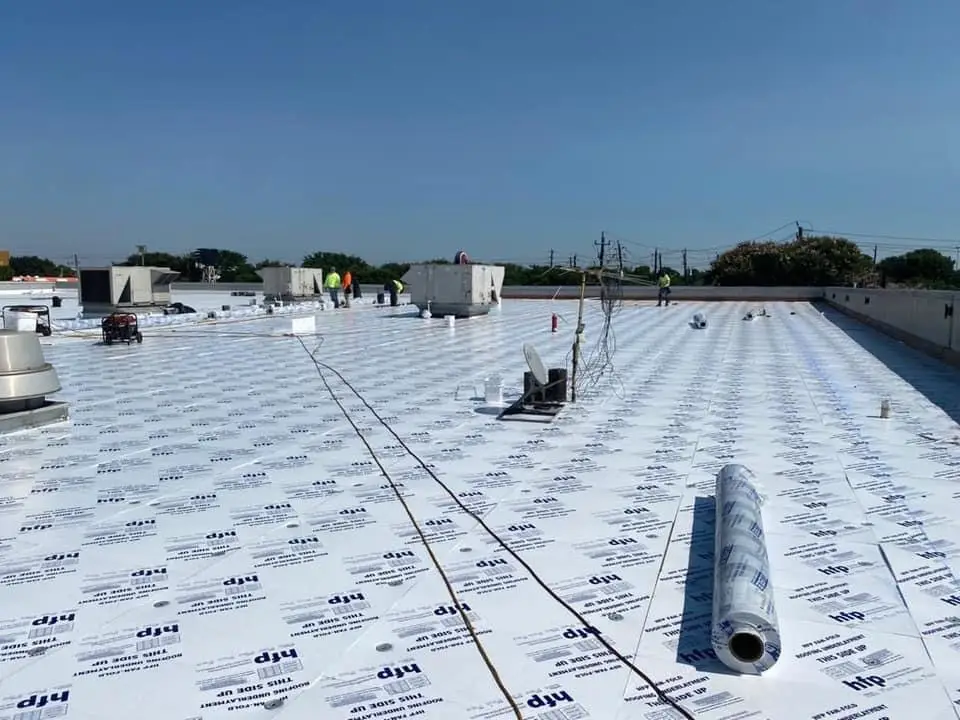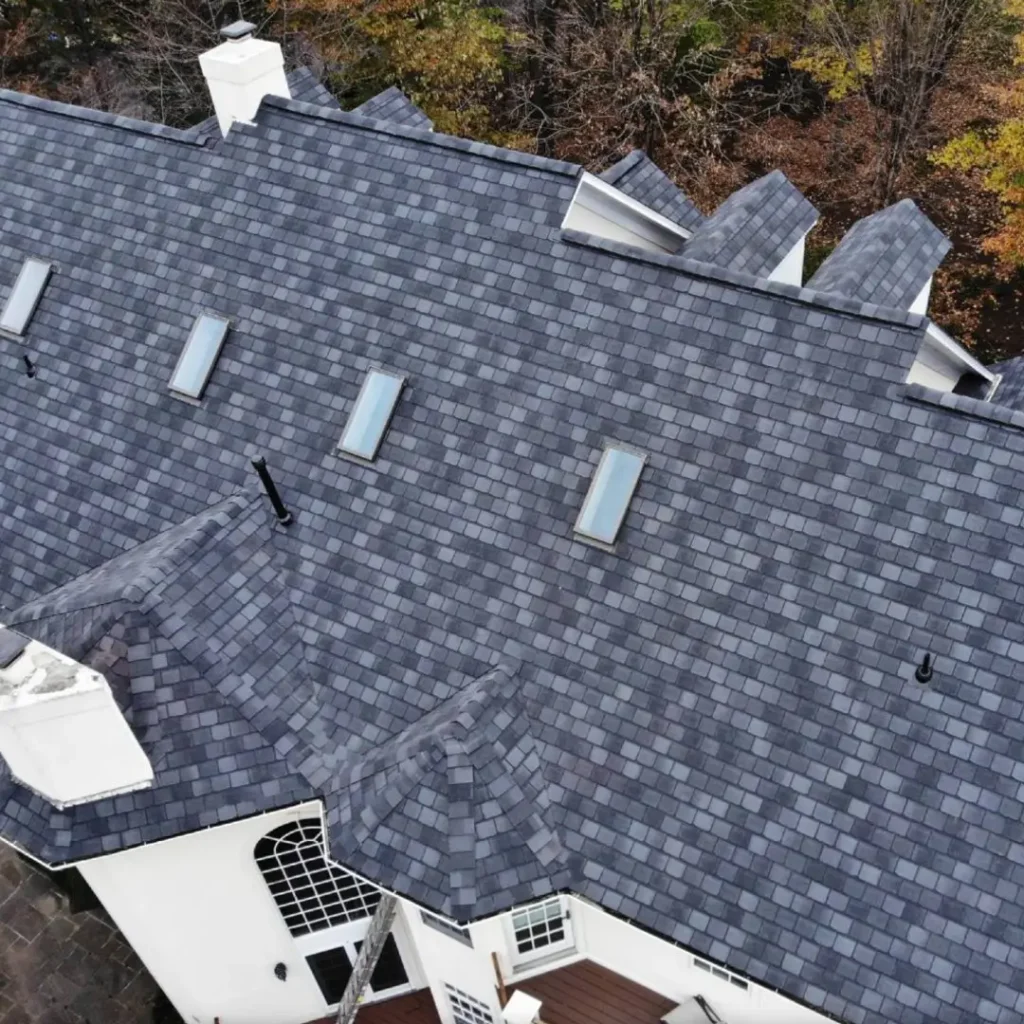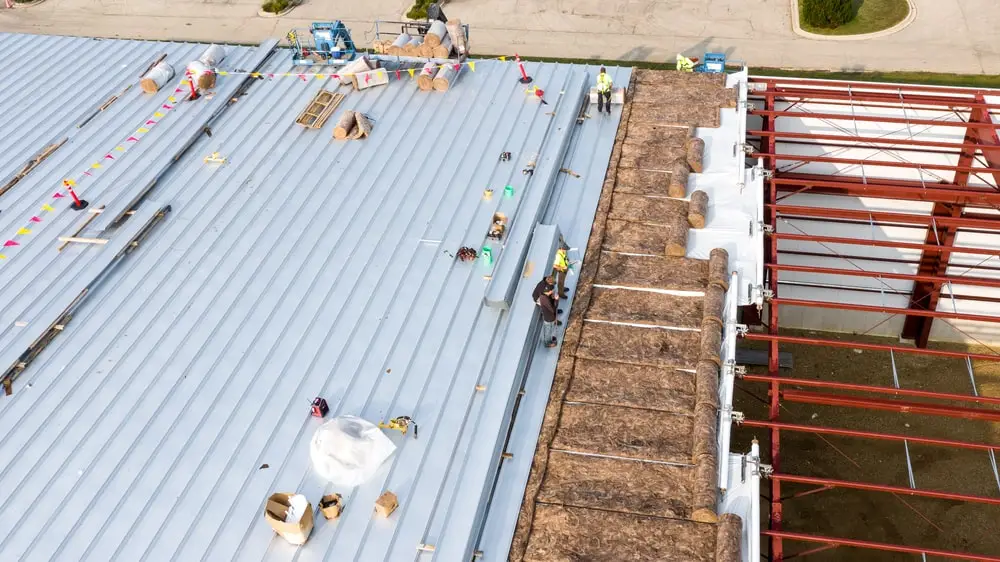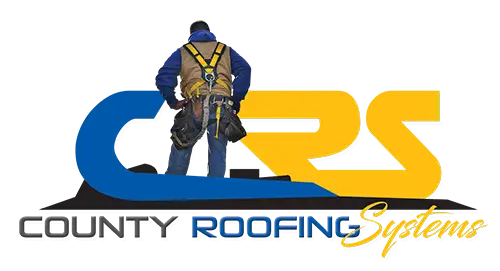Commercial Roofing for Long Island Businesses: A Complete Guide
Over 35 Years as a Roofer in Long Island
County Roofing Systems is the premier choice for Long Island businesses in need of commercial roofing solutions. We have over 30 years of experience servicing commercial properties. We understand the specific challenges that businesses face here, including exposure to harsh coastal weather, seasonal temperature fluctuations, and strict local building codes. Our licensed professionals are equipped with the latest tools and techniques to deliver durable, energy-efficient roofing systems that protect your investments and avoid costly repairs down the line.
By offering detailed consultations and clear project timelines, County Roofing Systems ensures that businesses are informed and satisfied throughout the entire process. This has earned us a loyal clientele and many positive reviews from Long Island business owners. To help you understand more what we do and what services we offer, we’ve prepared this guide to commercial roofing. Whether you’re a small business owner or a manager whose shopping center needs roof repair, find out County Roofing Systems can take care of your commercial roof problems.
What is Commercial Roofing?
Commercial roofing involves specialized materials and techniques designed to protect large buildings and withstand various environmental challenges. Unlike residential roofs, commercial roofing systems often feature flat or low-sloped designs. Instead of asphalt shingles, commercial roofs typically use materials like TPO, EPDM, or modified bitumen for durability. Roofing contractors build commercial roofs to handle high foot traffic, support large HVAC units, and resist water pooling.
Experienced commercial roofing contractors understand the unique demands of commercial roofing, from material selection to installation techniques. They have the tools and knowledge to prevent common issues like leaks, ponding water, and shrinkage. Choosing a licensed, insured contractor with a proven track record ensures your roof is installed safely, meeting all local building codes and industry standards.
A qualified contractor also provides ongoing maintenance and support. Regular inspections, repairs, and updates from a reputable roofing company extend your roof’s lifespan and help you avoid unexpected, costly repairs. Commercial insurance companies require regular maintenance and inspection to stay in compliance with your policy’s requirements.
Types of Commercial Roofing
Commercial Flat Roofs

Flat roofs offer practical advantages for large commercial structures. Unlike the sloped roofs you find on most Long Island homes, flat roofs maximize usable space. It’s easier to place and access equipment like HVAC systems and solar panels on a flat roof.
The simpler design of a flat roof is also more economical for larger buildings. It requires less material and labor than sloped roofs, significantly reducing installation costs for large commercial structures like warehouses, shopping centers, and office buildings. Flat roofs also provide flexibility in building design, enabling architects to create multi-story buildings without complicated roofing transitions.
Additionally, flat roofs support sustainable design goals. Many flat-roofed commercial buildings incorporate “green” or “cool” roofing systems to improve energy efficiency. Green roofs use vegetation to absorb rainwater, reduce heat, and improve insulation, while cool roofs use reflective materials to minimize solar heat absorption. This not only reduces operational costs but also supports environmental sustainability.
Common flat roof materials include:
TPO Roofing
TPO (Thermoplastic Olefin) roofing offers an ideal solution for commercial buildings on Long Island. This single-ply roofing membrane resists UV rays, harsh weather, and chemical exposure, making it perfect for buildings exposed to Long Island’s coastal climate. TPO’s reflective surface reduces heat absorption, lowering cooling costs and creating a more comfortable indoor environment, which appeals to energy-conscious businesses.
Commercial property owners also appreciate TPO roofing for its affordability and easy installation. TPO requires minimal maintenance and has a lifespan of 15-25 years. With its durability and energy benefits, TPO roofing remains a popular choice for Long Island businesses looking to protect their properties and reduce operational costs.
EPDM Roofing
EPDM (Ethylene Propylene Diene Monomer) roofing is a trusted choice for commercial buildings on Long Island due to its durability and flexibility. This synthetic rubber membrane withstands harsh weather, salt air, and temperature changes, making it ideal for the region’s coastal climate. Known for its resilience, EPDM roofing resists UV radiation and holds up well in areas prone to wind and rain.
Long Island business owners choose EPDM for its cost-effectiveness and long lifespan of 20-30 years. Its simple installation and minimal maintenance make it a practical choice for large commercial roofs. EPDM also improves energy efficiency when installed with white reflective coatings, helping businesses reduce cooling costs during the summer months.
Modified Bitumen Roofing
Modified bitumen roofing provides Long Island commercial buildings with a durable, weather-resistant solution that handles high foot traffic and severe coastal conditions. Composed of reinforced asphalt and polymers, modified bitumen offers excellent flexibility, adapting well to Long Island’s temperature fluctuations. This resilience minimizes cracking and leaking, essential for commercial properties facing variable weather.
Many business owners prefer modified bitumen roofing for its strong, waterproof seal and straightforward maintenance. It also works well with energy-efficient coatings, helping lower cooling costs by reflecting sunlight. With its blend of strength, adaptability, and affordability, modified bitumen roofing remains a solid choice for Long Island’s commercial buildings.
Commercial Sloped Roofs

Sloped roofs, though less common in commercial settings, offer unique benefits for certain Long Island businesses. They provide excellent water drainage, naturally directing rain and snow off the roof. They also give a more traditional aesthetic and greater curb appeal. You will find see sloped roofs on many smaller multifamily residential buildings, as well as some retail stores, restaurants, and smaller office buildings.
For businesses seeking a roof that combines durability, aesthetics, and functionality, sloped roofs provide a valuable solution. The material choice often depends on factors like budget, desired longevity, and the building’s architectural style. Whether for a quaint retail shop, a community center, or a small office complex, a well-designed sloped roof can improve both functionality and curb appeal, enhancing the building’s value and attractiveness to customers.
Common materials used for Long Island commercial buildings with sloped roofs include:
Asphalt Shingle Roofing
Sloped asphalt shingle roofs are an affordable, attractive roofing option that balances function and aesthetics. They provide excellent weather protection and effective water drainage for Long Island’s rainy and snowy seasons. Asphalt shingles come in a wide range of colors and styles, so you can select options align with your branding or architectural design.
Businesses such as retail stores, small offices, and restaurants often choose asphalt shingles for their cost-effectiveness and durability. Asphalt shingles also offer an easier installation and repair process, keeping long-term maintenance affordable. With a lifespan of 20–30 years, sloped asphalt shingle roofs provide commercial properties with reliable performance and a professional appearance that can attract customers and enhance property value.
Metal Roofing
Metal roofing is an excellent choice for commercial buildings with sloped roofs, offering durability, energy efficiency, and low maintenance. Made from materials like steel, aluminum, or copper, metal roofs withstand harsh weather, resist corrosion, and last up to 50 years. Their reflective properties help reduce heat absorption, keeping energy costs down and indoor spaces cooler in the summer months.
Businesses with sloped roofs, such as retail stores, office buildings, and industrial facilities, often choose metal roofing for its clean, professional look. Metal roofs are also fire-resistant and eco-friendly, as many metal roofing materials are recyclable. This makes them an appealing option for commercial property owners seeking long-term value and sustainability.
The Commercial Roofing Installation Process
Initial Consulting and Planning
The installation process begins with a detailed consultation and planning phase. Commercial roofing contractors assess the building’s structure, size, and specific needs to recommend the best roofing options. During this consultation, contractors also examine the existing roof, identify any repairs needed, and discuss the property owner’s budget, desired materials, and long-term goals. This step ensures that the final product aligns with both functional needs and aesthetic preferences.
The planning stage also involves creating a project timeline that minimizes disruptions to the business. Contractors work closely with property owners to outline each phase, providing a realistic schedule for when the building may need to limit certain operations. Proper planning helps ensure that the project progresses smoothly and meets both the budget and timeline requirements.
Material Selection
Choosing the right materials is one of the most important steps in the commercial roofing installation process. Options for commercial roofing include TPO, EPDM, modified bitumen, and asphalt shingles for sloped roofs. Each material offers unique advantages based on climate, maintenance preferences, and budget. For instance, TPO is ideal for energy efficiency, while EPDM is known for durability in variable weather conditions. Metal and asphalt shingles, meanwhile, are more commonly used for sloped roofs, providing aesthetic appeal and reliable performance.
The material selection process includes assessing the building’s specific needs and the expected lifespan of each option. Many commercial property owners prioritize energy efficiency, making reflective materials like TPO or coated metal roofs popular choices. The contractor helps guide this decision, considering all relevant factors to select a material that meets the building’s functional and aesthetic needs.
Installation

With materials selected, the actual installation process begins. For commercial roofs, this phase can involve specialized techniques, equipment, and a larger team to handle the demands of a bigger roofing structure. Contractors first prepare the existing roof by removing any old materials, cleaning the surface, and addressing structural repairs as needed. A proper foundation ensures the new roof adheres well and provides maximum durability.
Installation typically starts at the edges and works inward, with crews applying materials systematically to maintain structural integrity and avoid issues like water pooling. Each layer is applied with precision, ensuring a watertight seal and effective insulation. For larger commercial roofs, contractors may work section by section, especially if weather is a factor, to complete the installation as quickly and efficiently as possible. Throughout this process, the installation team closely monitors each step to meet safety and quality standards.
Post-Installation Inspection
The final phase of commercial roofing installation is a thorough post-installation inspection. This step is critical to ensure the new roof meets all industry standards and local building codes. Contractors inspect the entire roof, checking for proper material application, secure sealing, and any potential weak points that may need adjustment.
This inspection phase also provides property owners with essential maintenance tips and guidelines for maximizing the roof’s lifespan. Contractors may schedule a follow-up inspection after a few months to verify that the roof has settled correctly and continues to function optimally. A successful post-installation inspection gives property owners confidence in their investment, ensuring long-term durability and minimal maintenance issues.
Essential Commercial Roof Maintenance
Regular Inspections
Regular inspections are vital for maintaining a commercial roof. Schedule inspections at least twice a year, preferably in spring and fall, to catch seasonal issues. Inspections help identify minor issues before they escalate into costly problems. A professional roofing contractor inspects for cracks, leaks, and signs of wear or structural damage. Seasonal inspections are also essential after severe storms or weather events, which can often cause hidden damage.
Inspections provide an opportunity to review the integrity of the roofing material, check for ponding water, and assess drainage systems. Many commercial roofs are flat, making them susceptible to pooling water and clogged drains, especially during rainy seasons. Routine checks help ensure the roof drains water effectively, reducing the risk of leaks and material deterioration. Regular inspections provide peace of mind and extend the roof’s lifespan by addressing issues early.
Cleaning and Debris Removal
Cleaning and debris removal are equally important for a healthy commercial roof. Leaves, dirt, and other debris often accumulate on commercial roofs, especially flat ones. Left unchecked, this debris clogs drains, leading to water accumulation and potential leaks. Schedule cleanings at least twice a year and after storms to prevent these problems.
In addition to clearing drains, ensure the roof surface remains free from moss, algae, and other organic growths. These growths can degrade roofing materials and create slippery conditions that increase risks for maintenance crews. Cleaning removes harmful debris and prepares the roof for seasonal weather changes. It’s also wise to trim overhanging trees, as they contribute to debris buildup and can damage the roof during high winds.
Addressing Minor Repairs
Addressing minor repairs promptly can prevent more extensive damage to a commercial roof. Small issues like cracked flashing, minor leaks, or loose shingles may seem harmless but can lead to serious problems. Delaying repairs often results in water intrusion, mold growth, and weakened structural integrity.
A proactive approach to minor repairs also keeps repair costs manageable. Fixing small leaks or replacing damaged shingles costs far less than replacing large roof sections. For commercial roofs, especially those with high foot traffic or heavy equipment, check for punctures or wear from equipment. Repairing punctures and resealing affected areas ensures the roof remains watertight and stable.
Regularly addressing minor repairs contributes to the roof’s longevity, reducing the frequency of major repairs or premature replacements. Commercial roof maintenance focuses on preventing issues rather than waiting for costly damage, providing business owners with a reliable and cost-effective roof solution.
Common Problems with Commercial Roofing
Roof Leaks
Ponding Water
Ponding water, or water that pools on a flat roof after rain, poses significant risks to commercial roofing. Standing water adds weight to the roof, potentially straining the structure and causing materials to break down over time. Persistent ponding can also lead to mold and algae growth, which weakens the roofing material and increases the risk of leaks.
Effective drainage systems help prevent ponding by allowing water to flow off the roof quickly. During regular maintenance, clear all drains and downspouts to ensure they function properly. Commercial roofing systems often include slight slopes to help with drainage, but these may settle over time, creating low spots where water can pool. Contractors can use roofing materials or additional drainage solutions to correct these areas, ensuring the roof remains dry and structurally sound.
Roof Shrinkage
Roof shrinkage, particularly common in EPDM roofing, occurs when the membrane contracts, pulling away from the edges and seams. This shrinkage creates gaps and tension that compromise the roof’s waterproofing, increasing the likelihood of leaks and material failure. Temperature fluctuations, poor installation, and aging materials often contribute to shrinkage.
Preventing roof shrinkage requires selecting high-quality materials and ensuring proper installation. During installation, allow enough material to prevent tension as temperatures fluctuate. Regular inspections can detect signs of shrinkage early, allowing contractors to re-secure the membrane or reinforce seams before they develop into larger problems. Addressing shrinkage quickly helps extend the life of the roof and maintains its protective qualities.
Choosing the Right
Commercial Roofing Contractor

People Also Ask...
TPO, EPDM, and modified bitumen are popular for flat roofs. Metal and asphalt shingles work well for sloped commercial roofs.
Lifespans vary by material: TPO and EPDM last about 20-30 years, while metal roofs can last 40-50 years with proper maintenance.
Salt air, temperature changes, and heavy storms create wear on materials, making regular inspections and maintenance crucial.
Inspect commercial roofs twice a year, ideally in spring and fall, and after severe storms to catch issues early.
TPO is highly energy-efficient due to its reflective properties, which help lower cooling costs in warmer months.
Costs depend on materials, roof size, and complexity but typically range from $5 to $12 per square foot.
Yes, but consult a roofing contractor to ensure the roof’s structure and materials can support the panels.
TPO is highly reflective and energy-efficient, while EPDM is durable, especially in extreme temperature conditions.
The coastal climate increases exposure to salt, moisture, and wind, which can lead to faster deterioration without proper maintenance.
In over 3 decades of contracting work on Long Island, we’ve worked with many local lenders. Give us a call and we can help you protect your business with a brand new roof.


